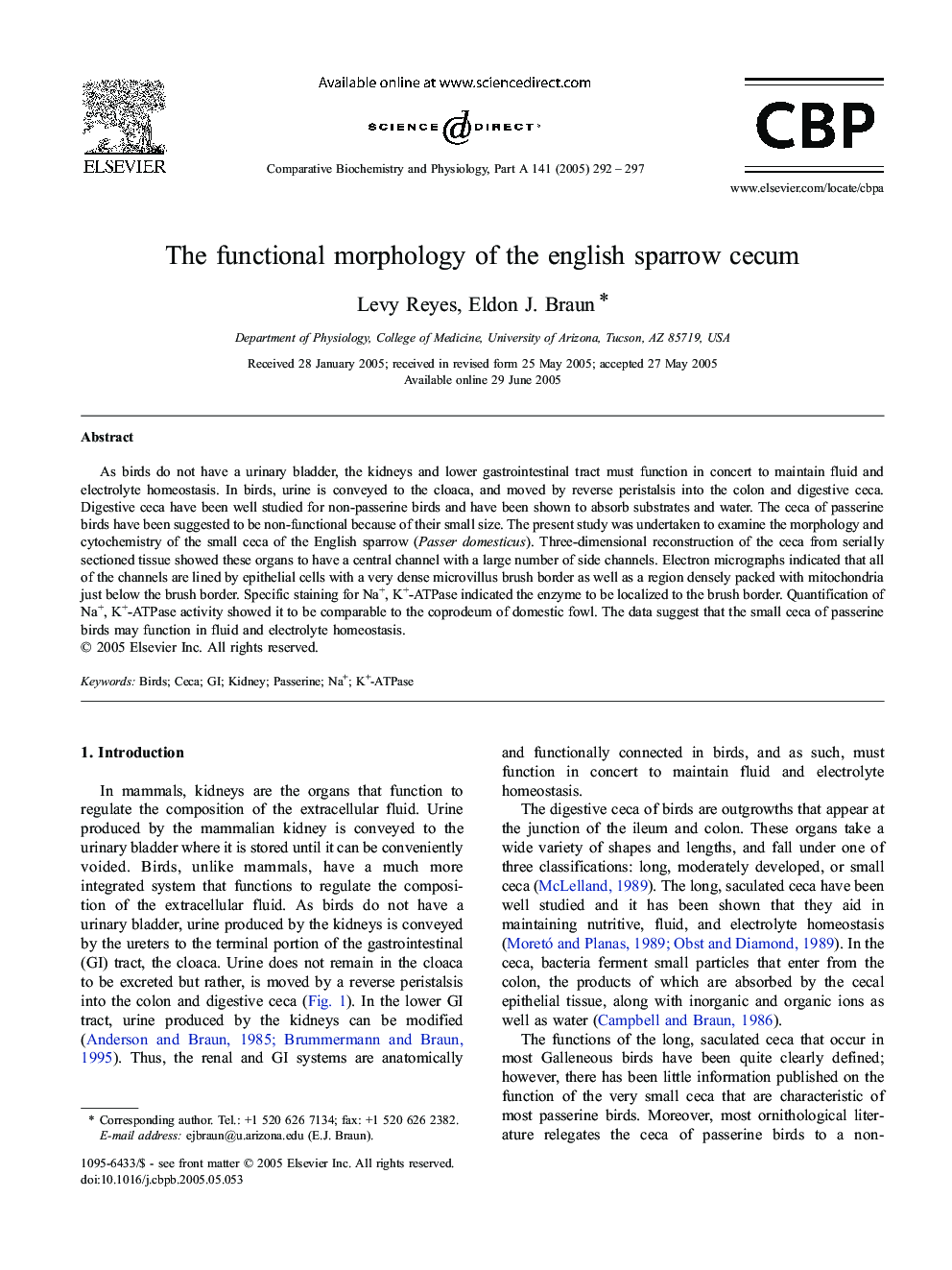| Article ID | Journal | Published Year | Pages | File Type |
|---|---|---|---|---|
| 10819150 | Comparative Biochemistry and Physiology Part A: Molecular & Integrative Physiology | 2005 | 6 Pages |
Abstract
As birds do not have a urinary bladder, the kidneys and lower gastrointestinal tract must function in concert to maintain fluid and electrolyte homeostasis. In birds, urine is conveyed to the cloaca, and moved by reverse peristalsis into the colon and digestive ceca. Digestive ceca have been well studied for non-passerine birds and have been shown to absorb substrates and water. The ceca of passerine birds have been suggested to be non-functional because of their small size. The present study was undertaken to examine the morphology and cytochemistry of the small ceca of the English sparrow (Passer domesticus). Three-dimensional reconstruction of the ceca from serially sectioned tissue showed these organs to have a central channel with a large number of side channels. Electron micrographs indicated that all of the channels are lined by epithelial cells with a very dense microvillus brush border as well as a region densely packed with mitochondria just below the brush border. Specific staining for Na+, K+-ATPase indicated the enzyme to be localized to the brush border. Quantification of Na+, K+-ATPase activity showed it to be comparable to the coprodeum of domestic fowl. The data suggest that the small ceca of passerine birds may function in fluid and electrolyte homeostasis.
Related Topics
Life Sciences
Biochemistry, Genetics and Molecular Biology
Biochemistry
Authors
Levy Reyes, Eldon J. Braun,
